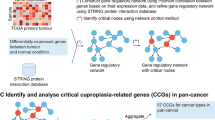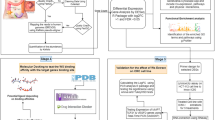Abstract
Purpose
In this work, we aimed to comprehensively document the expression of Strawberry Notch homolog (SBNO) 1 and 2 in glioblastoma (GBM) tissue and patient-derived GBM stem-like cell (GSC) cultures.
Methods
We investigated SBNO1 and SBNO2 expression at the RNA and protein levels in glioma patient tissue and GSCs, respectively by performing immunostainings and qPCR analyses. We also used publicly-available datasets for assessing SBNO1 and SBNO2 gene expression and related copy number alterations. We used lentiviral transduction of SBNO2 to analyze the effect of its expression in patient-derived GSCs.
Results
We observed that SBNO2 expression is increased in GBM tissue samples compared to non tumoral brain, or lower-grade gliomas, whereas SBNO1 expression remains unchanged. We hypothesized that such SBNO2 high expression might be linked to copy-number alterations at the level of the 19p13 chromosome section. We located SBNO1 and SBNO2 in different subcellular compartments. Finally, we observed that SBNO2 overexpression induces different phenotypes in different patient-derived GSCs.
Conclusion
These results provide the first characterization of SBNO1 and SBNO2 expression in glioma tissue, and indicate SBNO2 as highly expressed in GBM.





Similar content being viewed by others
Data Availability
The authors declare that all data supporting the findings of this study are available within the article and its supplementary information files. Other information is available from the corresponding author upon reasonable request.
References
Ostrom QT, Cioffi G, Gittleman H et al (2019) CBTRUS statistical report: primary brain and other central nervous system tumors diagnosed in the United States in 2012–2016. Neuro Oncol. https://doi.org/10.1093/neuonc/noz150
Stupp R, Mason WP, van den Bent MJ et al (2005) Radiotherapy plus concomitant and adjuvant temozolomide for glioblastoma. N Engl J Med. https://doi.org/10.1056/nejmoa043330
McLendon R, Friedman A, Bigner D et al (2008) Comprehensive genomic characterization defines human glioblastoma genes and core pathways. Nature. https://doi.org/10.1038/nature07385
Brennan CW, Verhaak RGW, McKenna A et al (2013) The somatic genomic landscape of glioblastoma. Cell 153:139–152. https://doi.org/10.1016/j.cell.2013.09.034
Ceccarelli M, Barthel FP, Malta TM et al (2016) Molecular profiling reveals biologically discrete subsets and pathways of progression in diffuse glioma. Cell. https://doi.org/10.1016/j.cell.2015.12.028
Louis DN, Perry A, Wesseling P et al (2021) The 2021 WHO classification of tumors of the central nervous system: a summary. Neuro Oncol 23(8):1231–1251. https://doi.org/10.1093/NEUONC/NOAB106
Shen C, Yu J, Zhang X et al (2019) Strawberry Notch 1 (SBNO1) promotes proliferation of spermatogonial stem cells via the noncanonical Wnt pathway in mice. Asian J Androl 21(4):345. https://doi.org/10.4103/AJA.AJA_65_18
Tsuda L, Nagaraj R, Zipursky SL, Banerjee U (2002) An EGFR/Ebi/Sno pathway promotes delta expression by inactivating Su(H)/SMRTER repression during inductive notch signaling. Cell 110(5):625–637. https://doi.org/10.1016/S0092-8674(02)00875-9
Takano A, Zochi R, Hibi M, Terashima T, Katsuyama Y (2010) Expression of strawberry notch family genes during zebrafish embryogenesis. Dev Dyn 239(6):1789–1796. https://doi.org/10.1002/DVDY.22287
Takano AI, Zochi R, Hibi M, Terashima T, Katsuyama YU (2010) Function of strawberry notch family genes in the Zebrafish brain development. Kobe J Med Sci 56(5):220–230
Watanabe Y, Miyasaka KY, Kubo A et al (2017) Notch and Hippo signaling converge on Strawberry Notch 1 (Sbno1) to synergistically activate Cdx2 during specification of the trophectoderm. Sci Rep 7(1):1–17. https://doi.org/10.1038/srep46135
Grill M, Syme TE, Noçon AL et al (2015) Strawberry notch homolog 2 is a novel inflammatory response factor predominantly but not exclusively expressed by astrocytes in the central nervous system. Glia 63(10):1738–1752. https://doi.org/10.1002/GLIA.22841
Syme TE, Grill M, Hayashida E, Viengkhou B, Campbell IL, Hofer MJ (2022) Strawberry notch homolog 2 regulates the response to interleukin-6 in the central nervous system. J Neuroinflammation 19(1):1–17. https://doi.org/10.1186/S12974-022-02475-1
El Kasmi KC, Smith AM, Williams L et al (2007) Cutting edge: a transcriptional repressor and corepressor induced by the STAT3-regulated anti-inflammatory signaling pathway. J Immunol 179(11):7215–7219. https://doi.org/10.4049/JIMMUNOL.179.11.7215
Maruyama K, Uematsu S, Kondo T et al (2013) Strawberry notch homologue 2 regulates osteoclast fusion by enhancing the expression of DC-STAMP. J Exp Med 210(10):1947–1960. https://doi.org/10.1084/JEM.20130512
Wu R, Sun JY, Zhao LL, Fan ZN, Yang C (2020) Systematic identification of key functional modules and genes in gastric cancer. Biomed Res Int. https://doi.org/10.1155/2020/8853348
Bowman RL, Wang Q, Carro A, Verhaak RGW, Squatrito M (2017) GlioVis data portal for visualization and analysis of brain tumor expression datasets. Neuro Oncol. https://doi.org/10.1093/neuonc/now247
Madhavan S, Zenklusen J-C, Kotliarov Y, Sahni H, Fine HA, Buetow K (2009) Rembrandt: helping personalized medicine become a reality through integrative translational research. Mol Cancer Res 7(2):157–167. https://doi.org/10.1158/1541-7786.MCR-08-0435
Eckel-Passow JE, Lachance DH, Molinaro AM et al (2015) Glioma groups based on 1p/19q, IDH, and TERT promoter mutations in tumors. N Engl J Med. https://doi.org/10.1056/nejmoa1407279
Tang Z, Li C, Kang B, Gao G, Li C, Zhang Z (2017) GEPIA: a web server for cancer and normal gene expression profiling and interactive analyses. Nucleic Acids Res 45(W1):W98–W102. https://doi.org/10.1093/NAR/GKX247
De Witt Hamer PC, Van Tilborg AAG, Eijk PP et al (2008) The genomic profile of human malignant glioma is altered early in primary cell culture and preserved in spheroids. Oncogene. https://doi.org/10.1038/sj.onc.1210850
Lee J, Kotliarova S, Kotliarov Y et al (2006) Tumor stem cells derived from glioblastomas cultured in bFGF and EGF more closely mirror the phenotype and genotype of primary tumors than do serum-cultured cell lines. Cancer Cell. https://doi.org/10.1016/j.ccr.2006.03.030
Lombard A, Digregorio M, Delcamp C, Rogister B, Piette C, Coppieters N (2021) The subventricular zone, a hideout for adult and pediatric high-grade glioma stem cells. Front Oncol. https://doi.org/10.3389/fonc.2020.614930
Roversi G, Pfundt R, Moroni RF et al (2005) Identification of novel genomic markers related to progression to glioblastoma through genomic profiling of 25 primary glioma cell lines. Oncogene 25(10):1571–1583. https://doi.org/10.1038/sj.onc.1209177
Sottoriva A, Spiteri I, Piccirillo SGM et al (2013) Intratumor heterogeneity in human glioblastoma reflects cancer evolutionary dynamics. Proc Natl Acad Sci 110(10):4009–4014. https://doi.org/10.1073/PNAS.1219747110
Brandstoetter T, Maurer B, Schmoellerl J et al (2022) S227: SBNO2 is a specific dependency of STAT3-deriven T-cell malignancies. HemaSphere 6:128–129. https://doi.org/10.1097/01.HS9.0000843800.65427.8E
West AJ, Tsui V, Stylli SS et al (2018) The role of interleukin-6-STAT3 signalling in glioblastoma (review). Oncol Lett 16(4):4095–4104. https://doi.org/10.3892/OL.2018.9227
Lee JH, Lee JE, Kahng JY et al (2018) Human glioblastoma arises from subventricular zone cells with low-level driver mutations. Nature 560(7717):243–247. https://doi.org/10.1038/s41586-018-0389-3
Acknowledgements
We thank the Neurosurgery Department and the Biobank from the Liège University Hospital for their support and collaboration. We are thankful to Dr Emmanuel Di Valentin and colleagues the GIGA Viral Vectors platform, for their advice and help in building lentiviral constructions, and we also thank Dr Sandra Ormenese and colleagues from the GIGA Cell Imaging platform.
Funding
We are invaluably grateful for the funding support provided by the the F.R.S.-F.N.R.S., Télévie, the Fondation Hospitalo-Universitaire Léon Frédéricq (Belgium), and the Neurological Foundation (New Zealand). NC is supported by the Neurological Fondation of New Zealand, JS is supported by a Télévie grant, and AL is Post-Doctoral Master Specialist (F.N.R.S.).
Author information
Authors and Affiliations
Contributions
NC, MD, BR and VN contributed to the study conception and design. Material preparation, data collection and analysis were performed by NC, JS, LL and LVS. The first draft of the manuscript was written by VN and all authors commented on previous versions of the manuscript. All authors read and approved the final manuscript.
Corresponding author
Ethics declarations
Competing interests
The authors have no relevant financial or non-financial interests to disclose.
Additional information
Publisher's Note
Springer Nature remains neutral with regard to jurisdictional claims in published maps and institutional affiliations.
Supplementary Information
Below is the link to the electronic supplementary material.
11060_2023_4240_MOESM1_ESM.png
Supplementary file1 (PNG 157 KB)—Figure S1: Expression profiles of SBNO1 and SBNO2 in normal tissues (normalized data from the Human Protein Atlas and GTEx transcriptomics datasets, generated and downloaded from https://www.proteinatlas.org). Results show that SBNO2 is not.
11060_2023_4240_MOESM2_ESM.png
Supplementary file2 (PNG 127 KB)—Figure S2: SBNO2 expression in different cancer tissue samples (from the TCGA database) versus normal matched tissues (from the GTEx database). Generated using the GEPIA online tool (http://gepia.cancer-pku.cn). Results show that SBNO2 is not highly expressed in many of the selected cancer types, only in GBM and pancreatic adenocarcinoma.
11060_2023_4240_MOESM3_ESM.png
Supplementary file3 (PNG 49 KB)—Figure S3: SBNO2 and SBNO2 expression in GSC spheres vs T018 in adherence. (A) SBNO2 mRNA expression in 5 patient-derived GSC cultures, i.e. T08, T013, T018, T033, T049 + T018 adherence (expressed as fold to GAPDH mRNA, N = 3 independent RNA samples). B) SOX2 mRNA expression in 5 patient-derived GSC cultures, i.e. T08, T013, T018, T033, T049 + T018 adherence (expressed as fold to GAPDH mRNA, N = 3 independent RNA samples).
Rights and permissions
Springer Nature or its licensor (e.g. a society or other partner) holds exclusive rights to this article under a publishing agreement with the author(s) or other rightsholder(s); author self-archiving of the accepted manuscript version of this article is solely governed by the terms of such publishing agreement and applicable law.
About this article
Cite this article
Coppieters, N., Scalisi, J., Digregorio, M. et al. Study of Strawberry Notch homolog 1 and 2 expression in human glioblastoma. J Neurooncol 161, 515–523 (2023). https://doi.org/10.1007/s11060-023-04240-7
Received:
Accepted:
Published:
Issue Date:
DOI: https://doi.org/10.1007/s11060-023-04240-7




